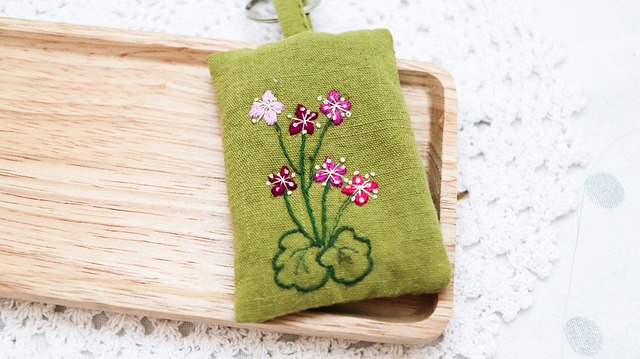Needlepoint

Introduction to Needlepoint
Needlepoint is a form of embroidery that involves stitching designs onto a stiff, open-weave canvas using a variety of threads. It’s a versatile craft that allows for the creation of intricate patterns and functional items such as pillows, wall art, and even upholstery. The stitches used in needlepoint range from simple tent stitches to more elaborate and decorative stitches, offering a wide range of creativity and complexity.
Key Aspects of Needlepoint:
- Canvas: Typically uses a stiff, open-weave canvas that comes in different gauges, depending on the level of detail you want in your design.
- Threads: Wool, silk, and cotton threads are commonly used, and the color selection can help bring your patterns to life.
- Needles: Tapestry needles with blunt tips are essential, designed to work with the open weave of the canvas.
- Stitches: Basic stitches like the tent stitch or basketweave stitch are great for beginners, while more advanced needlepoint projects might incorporate decorative or textured stitches.
Whether you’re a beginner or an experienced stitcher, needlepoint offers a relaxing way to create custom, detailed designs. Start simple with basic stitches and patterns, and as you gain confidence, explore more complex techniques to bring your ideas to life.
Can you make money with Needlepoint?
You can definitely make money with crochet. Many crafters turn their skills into a profitable side hustle or full-time business by selling handmade items or offering crochet patterns. Here are a few ways to monetize your crochet skills:
- Selling Finished Products: Handmade items like scarves, hats, blankets, or amigurumi (crocheted stuffed animals) are popular. You can sell them on platforms like Etsy, at local craft fairs, or through your own website.
- Selling Patterns: If you have the creativity to design your own crochet patterns, you can sell them as downloadable PDFs online. Many crochet enthusiasts look for new and unique patterns, and platforms like Ravelry, Etsy, and Craftsy are great places to sell your designs.
- Teaching Crochet: You can offer crochet lessons either locally or online. This could be in-person workshops or virtual classes on platforms like YouTube, Udemy, or Skillshare. Many people are eager to learn, especially beginners who want guided instruction.
- YouTube or Blogs: Creating content related to crochet—whether tutorials, product reviews, or showcasing your work—can generate revenue through ads, sponsorships, and affiliate marketing.
- Custom Orders: Taking on commissioned work for personalized or custom crochet projects allows you to charge a premium. These could be anything from custom-designed blankets to personalized baby gifts.
With time, skill development, and the right marketing approach, crochet can be a rewarding and profitable endeavor.
Are there any other professions/hobbies that could be leveraged for Needlepoint?
Yes, several professions and hobbies can be effectively leveraged alongside needlepoint to enhance your skills, creativity, and marketability:
- Graphic Design: Leveraging graphic design skills can help you create intricate and unique patterns for needlepoint. This can open opportunities for designing custom patterns for clients or selling digital needlepoint designs online.
- Interior Design: Needlepoint can complement interior design by creating custom, handmade pieces like pillows, wall art, and upholstery for home décor. You can offer needlepoint as a custom service in home design or even collaborate with interior designers.
- Textile Arts: If you are involved in other textile arts like embroidery, quilting, or weaving, these skills can enhance your needlepoint work. Combining techniques can result in unique, hybrid designs that stand out in the market.
- Teaching or Craft Workshops: If you’re experienced in needlepoint, you can teach it in craft workshops or community classes. Many hobbyists are interested in learning hands-on skills, and you can leverage your knowledge to host local workshops or online classes.
- Photography and Social Media Management: Great photography skills can help you showcase your needlepoint work effectively online. Pairing this with social media management can help build a strong following on platforms like Instagram or Pinterest, leading to sales, commissions, or teaching opportunities.
- Sewing and Upholstery: Sewing skills can be valuable in finishing needlepoint projects, such as turning a needlepoint piece into a pillow, handbag, or chair cover. These additional skills can allow you to offer a full-service product to clients.
- Content Creation and Blogging: If you have writing or blogging skills, you can leverage them by writing tutorials, guides, and blogs about needlepoint techniques, materials, and projects. This can generate revenue through ads, sponsored posts, or affiliate marketing.
These related hobbies and professions can expand your reach, creativity, and business potential within the needlepoint space.
Is it expensive to get started in Needlepoint?
Starting needlepoint is generally affordable. Here’s a quick overview of the basics:
- Canvas: Preprinted or blank, typically $5 to $30.
- Thread: Basic thread sets range from $5 to $20.
- Needles: A pack of tapestry needles costs around $3 to $10.
- Hoops/Frames: Basic hoops start at $3 to $15; larger frames may go over $20.
- Starter Kits: Include everything you need for $10 to $50.
Overall, you can start for as little as $20, but quality supplies might bring the cost closer to $50 or $100.
Essential Tools for Needlepoint
Here are the essential tools for needlepoint:
- Canvas: Available in a variety of sizes and styles, including pre-printed designs or blank canvases to create your own pattern.
- Needles: Tapestry needles are the most common, with a blunt tip and a large eye to hold embroidery floss or yarn.
- Thread/Floss: Embroidery floss or tapestry wool is typically used to stitch onto the canvas. The thread type depends on the look and texture you want for your project.
- Hoops or Frames: These help to keep the canvas taut while working. Hoops are smaller and portable, while stretcher bars or frames are ideal for larger, more detailed projects.
- Scissors: Small, sharp embroidery scissors allow for precision cutting of threads.
- Needle Threader: Helpful for threading the thick embroidery floss or wool through the needle’s eye.
- Thread Organizer: Helps keep different colors and threads sorted and tangle-free while working on complex designs.
- Pattern Chart: If working from a pattern, having a printed chart can help guide your progress.
- Tape Measure: For setting up your patterns centered.
These tools form the basics you’ll need to get started with needlepoint, whether you’re working on simple or more advanced designs.
Are there any safety considerations with Needlepoint?
Educational Resources for Needlepoint
Here are some educational resources for needlepoint, organized by skill level:
Beginner Resources:
- The Spruce Crafts – Needlepoint for Beginners: This site offers a comprehensive guide to starting needlepoint, covering basic stitches, materials, and techniques for beginners. It’s a great introduction to the craft with easy-to-follow instructions.
- Craftsy Classes: Craftsy offers online courses that cover the basics of needlepoint, ideal for those who prefer guided lessons with visual aids and expert tips.
Intermediate Resources:
- Mary Corbet’s Needle ‘n Thread: This blog provides detailed tutorials on more advanced stitches and techniques, ideal for intermediate-level needlepoint artists. Mary offers step-by-step guides with photos and videos to enhance learning.
- Pinterest Needlepoint Boards: A treasure trove of intermediate project ideas, patterns, and tips shared by the global needlepoint community. You can find a variety of creative patterns and technique improvements.
Advanced Resources:
- American Needlepoint Guild (ANG): This organization offers advanced workshops, certification programs, and professional-level classes for experienced needlepoint practitioners looking to refine their skills or even teach needlepoint themselves.
- Needlepoint Now Magazine: This publication features advanced needlepoint techniques, new patterns, and interviews with professionals in the field. It’s a great resource for staying current with trends in the needlepoint world.
Videos & Tutorials:
- YouTube – Needlepoint Channel: Various creators offer tutorials on everything from basic to advanced techniques, and many channels focus on specific projects or stitches.
- Bluprint (formerly Craftsy): Offers a variety of paid video courses for those interested in more structured, in-depth learning.
By utilizing these resources, you can steadily improve your needlepoint skills, whether you’re just starting out or looking to master more complex designs.
Are there Needlepoint communities or blogs that could be helpful?
Here are some helpful needlepoint communities and blogs, complete with links for easy access:
Communities:
- Needlepoint Nation (Facebook Group): A large, active group of needlepoint enthusiasts sharing tips, advice, and showcasing their projects.
- Reddit – r/Needlepoint: A subreddit dedicated to needlepoint, where members can share projects, ask questions, and find resources.
- Stitchers’ Village: An online community for needlework enthusiasts, including needlepoint. Offers forums, galleries, and resources.
Blogs:
- Mary Corbet’s Needle ‘n Thread: A popular blog offering tutorials, patterns, and stitch guides for needlepoint and other embroidery techniques.
- Chilly Hollow Needlepoint Adventure: A blog filled with tips, techniques, product reviews, and discussions on finishing techniques.
- Needlepoint Study Hall: Run by professional needlepoint teachers, this blog offers advanced techniques, design ideas, and industry updates.
These resources will help you find tutorials, connect with other needlepoint enthusiasts, and get inspired by new patterns and techniques.
Frequently Asked Questions (FAQ)
1. What is needlepoint?
Needlepoint is a type of embroidery where you stitch yarn or thread onto a canvas with a defined pattern. It often involves using various stitches to create decorative art or functional items like pillows, ornaments, or wall hangings.
2. What materials are typically used in needlepoint?
Needlepoint typically requires:
-
Canvas: The foundation on which you stitch. Common types are mono canvas, interlock, and penelope.
-
Thread/Yarn: Wool, silk, cotton, or a combination.
-
Needles: Tapestry needles with a blunt tip are the most commonly used for needlepoint.
3. How long does it take to complete a needlepoint project?
The time required to complete a project depends on the size, complexity of the pattern, and the number of stitches. Simple projects can take a few hours, while more intricate designs might take weeks or months.
4. What’s the difference between needlepoint and cross-stitch?
While both involve stitching on a fabric grid, needlepoint uses multiple types of stitches and typically fills the entire canvas, while cross-stitch uses an “X” stitch and usually leaves areas of the fabric visible.
5. Can beginners do needlepoint?
Yes! Needlepoint is beginner-friendly, and there are kits designed specifically for those new to the craft, featuring simple designs and basic stitches.
6. Do I need a pattern to start needlepoint?
While many needlepoint projects are done using pre-printed canvases or charts, it’s possible to create your own designs or stitch freehand if you’re feeling adventurous.
7. What are some popular needlepoint projects?
Popular projects include home décor items like cushions, wall art, and stockings, as well as smaller items like bookmarks, ornaments, and keychains.
8. Is needlepoint expensive to get started?
Starting needlepoint can be budget-friendly. Basic supplies like a small canvas, thread, and a needle can cost as little as $20-$50. More elaborate projects with premium materials may cost more.
9. Where can I find needlepoint patterns?
Needlepoint patterns can be found in craft stores, online shops, and blogs. Many needlepoint communities also share patterns for free.
10. Are there any online communities for needlepoint?
Yes! There are various needlepoint communities where you can find support, tutorials, and patterns. Popular options include Reddit’s r/Needlepoint and the Needlepoint Nation group on Facebook.
Ad Notice:
ToolFinder is a site as a free service. We do not charge a fee, and so we have ads on our site to help support development cost and basic time input.
We may also have links on our site to others for products - known as affiliate links - you will Not pay more by utilizing these links, but the merchant would provide ToolFinder a fee for the referral. As an Amazon Associate I earn from qualifying purchases.

